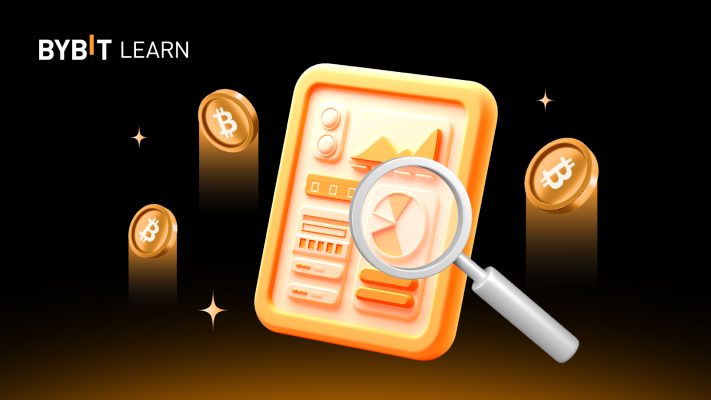What do you think of yourself? Well, Microsoft thinks you’re precious, but in the Matrix kind of way. In March 2020, Microsoft US published a patent application that describes a cryptocurrency system using body activity data for mining.
That’s right. According to Microsoft, the human body can be as valuable as the latest model of ASIC when it comes to mining.
Let’s dive in and see what this is about.
What is ‘brain mining’?
In Bitcoin, computers solve complicated puzzles to add new blocks to the blockchain. The ever-rising difficulty assures that the verified transactions inside the block are immutable, stored safely, and prevent double-spending.
As we all know, mining cryptocurrencies requires enormous quantities of energy. Therefore, Microsoft inventors Dustin Abramson, Derrick Fu, and Joseph Johnson Jr. came up with a model for a system in which the proof of work consensus mechanism employed for mining Bitcoin is exchanged with something that sounds like it comes out of a Sci-Fi blockbuster.
The patent application published in March 2020 implies that body activity like body radiation, body fluid flow, brain waves, or pulse rate can serve as proof-of-work in a cryptocurrency system.
The patent states that a task server, such as a service provider, can send a specific task, such as watching an ad, reading a piece of information, or even using an app, to a cryptocurrency system. When the user performs the task, the body data recorded by sensors can be used in the mining process as proof of work.
When the task is executed, data regarding body activity such as brain waves, body heat, blood flow, movements, or anything else associated with the request is hashed and checked. If the results are authentic and match the desired outcomes, that indicates the task was completed. The obtained data will be used in confirming transactions and the user will be awarded the system’s cryptocurrency.
Regardless of how it sounds, the necessary technology to put together a cryptocurrency mining system based on your body activity data does exist, as we will see.
Various devices like functional magnetic resonance imaging (fMRI) scanners or sensors, electroencephalography (EEG) sensors, near-infrared spectroscopy (NIRS) sensors, optical sensors, radio frequency (RF) sensors, ultrasonic sensors, cameras, or even the heart rate monitor from the most basic smartwatch can be used for detecting the necessary data in this system.
But is it safe? How does it actually work? Can my dog mine cryptocurrency?
How does it work?
The method Microsoft inventors propose may look quite complex at first glance. So let’s try and figure out how it works.
In FIG. 1 we have the illustration of an environment that explains how their method would work. We have a task server (110), a Communication Network (120), a user device (130), a sensor (140), a user (145), and finally, a Cryptocurrency System (150).

This process can imply multiple task servers, several communication networks, and a lot more user devices, sensors, and users to be connected to the cryptocurrency system.
First, the task server can be represented by an app server, a database server, a service provider, and more.
The communication network can be represented by the internet, radiofrequency, Bluetooth, etc.
The user device can be a laptop, a smartphone, even a server – any gadget able to store and send data.
The sensor can either be a part of the user device or a separate accessory that communicates with the device. The body activity data of the sensors that can be used in this method are functional magnetic resonance imaging (fMRI) scanners or sensors, electroencephalography (EEG) sensors, near-infrared spectroscopy (NIRS) sensors, cameras, or heart rate monitors.
As for the cryptocurrency system, it is represented by a party that processes commands and stores information in one or more cryptocurrency data structures. Also, it can provide tasks to the user device, alternatively to the task server.
The cryptocurrency system can be a third party company, the same entity as the task server, or a blockchain network.
The diagram from FIG. 2 shows that for a decentralized cryptocurrency system, the distributed ledger scheme would work typically with several compute resources acting as nodes that communicate with each other either directly or through a communication network.
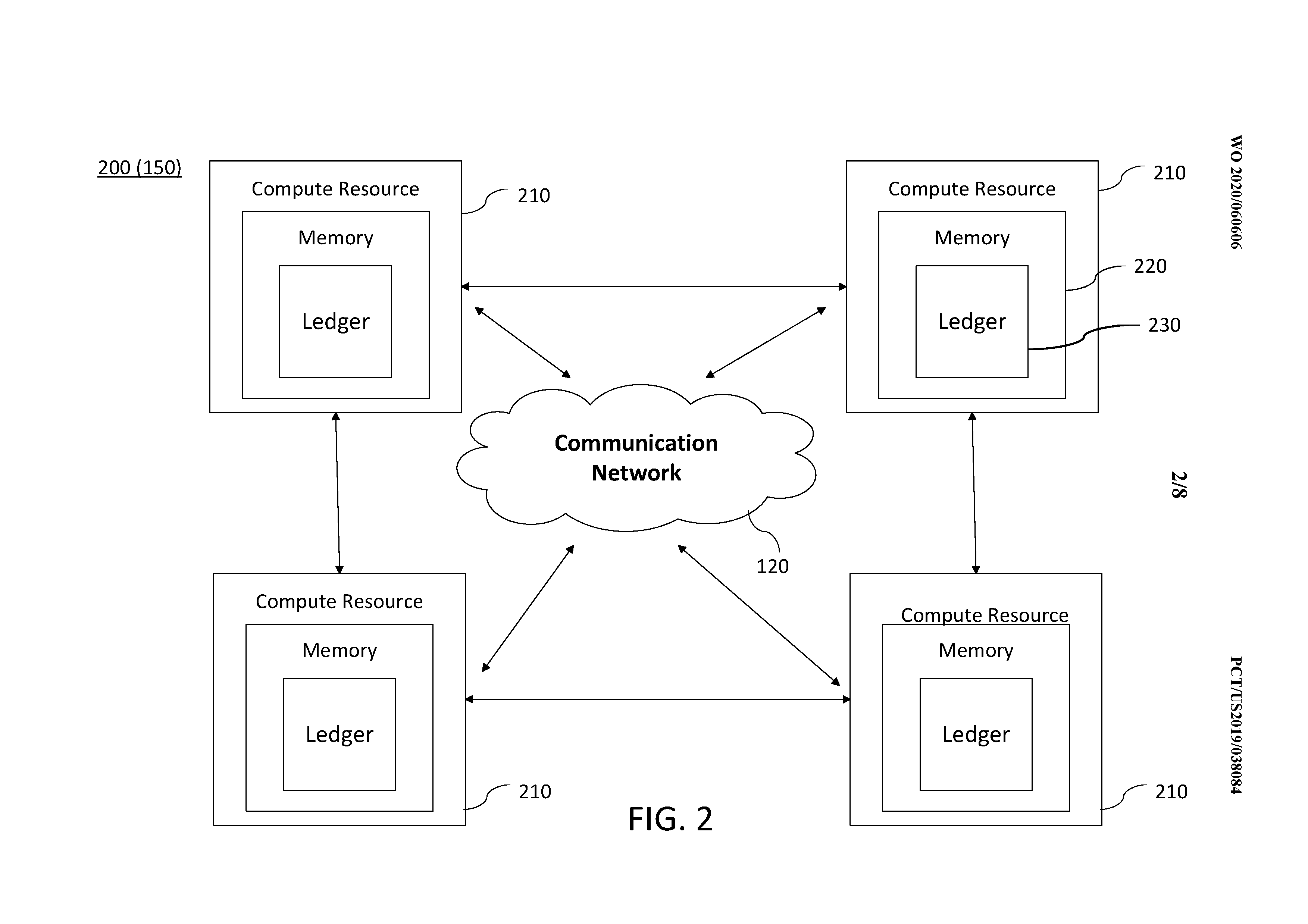
Also, the nodes communicate with each other to ensure that every one of them is up to date. And even if in FIG. 1 the user device is illustrated separately from the cryptocurrency system, it can also be integrated into the decentralized network as a compute resource, serving as a node.
How will cryptocurrencies be mined?
Now that we understand how the system is structured, let’s continue with FIG. 3 to see how the data actually flows and how the mining actually happens.
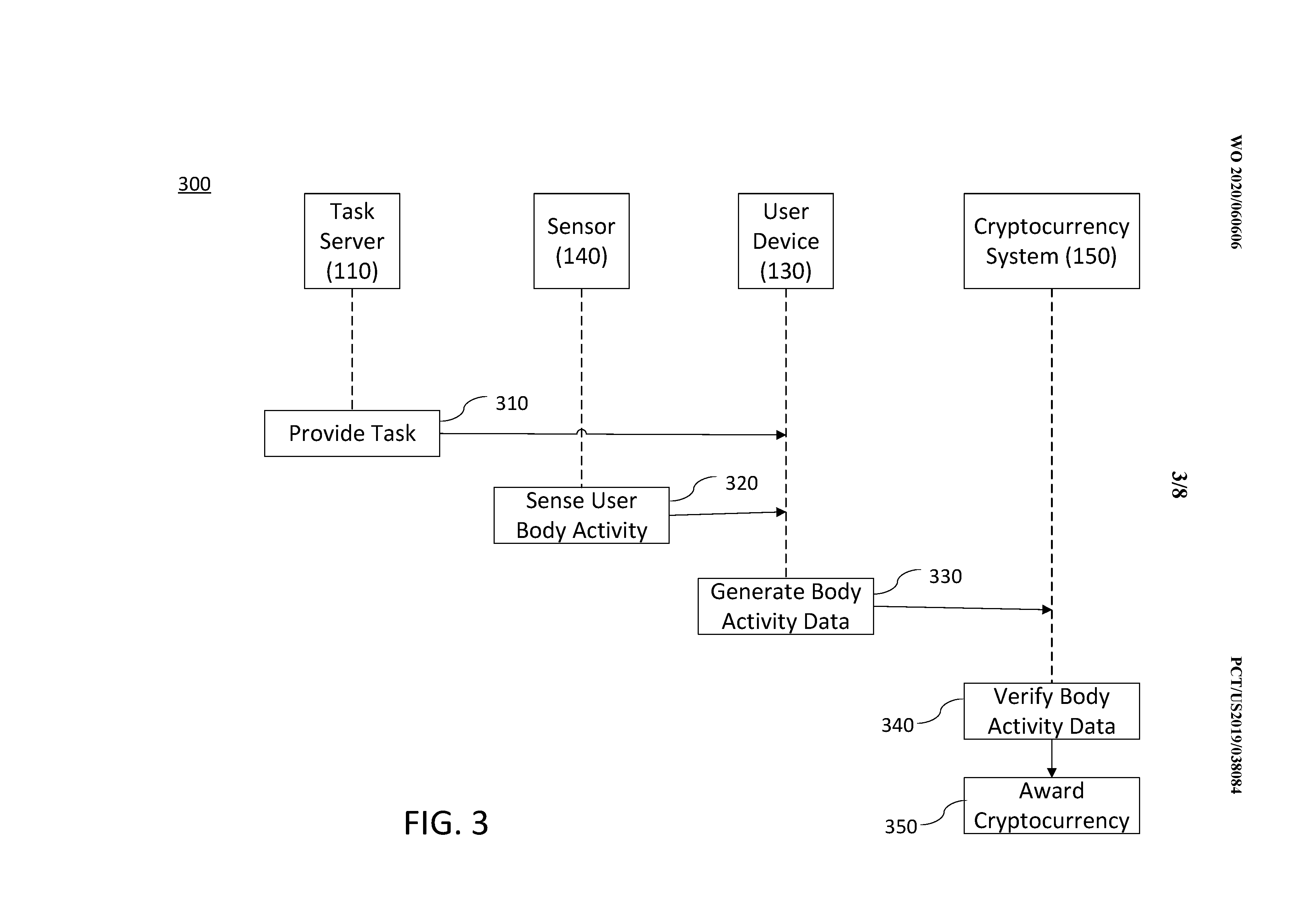
The Diagram shows us that the task server sends out a provided task illustrated as operation 310. It can be anything from watching an ad to doing 10 push-ups to solving a CAPTCHA.
The user device will receive the task and when the user will perform the required activity, the sensors will monitor his body. The sensed body activity such as brain activities, body fluid flow, or body movement will then be sent to the user device as operation 320. Next, the user device will process and generate data about body activity and send its values to the cryptocurrency system as operation 330. Once the data is sent into the cryptocurrency system it will be verified to validate transactions and the user will be awarded cryptocurrency.
How are the tasks validated?
Don’t think you can make a quick buck by having your dog watch some ads. The patent employs a strong validation mechanism which is illustrated in FIG. 4.
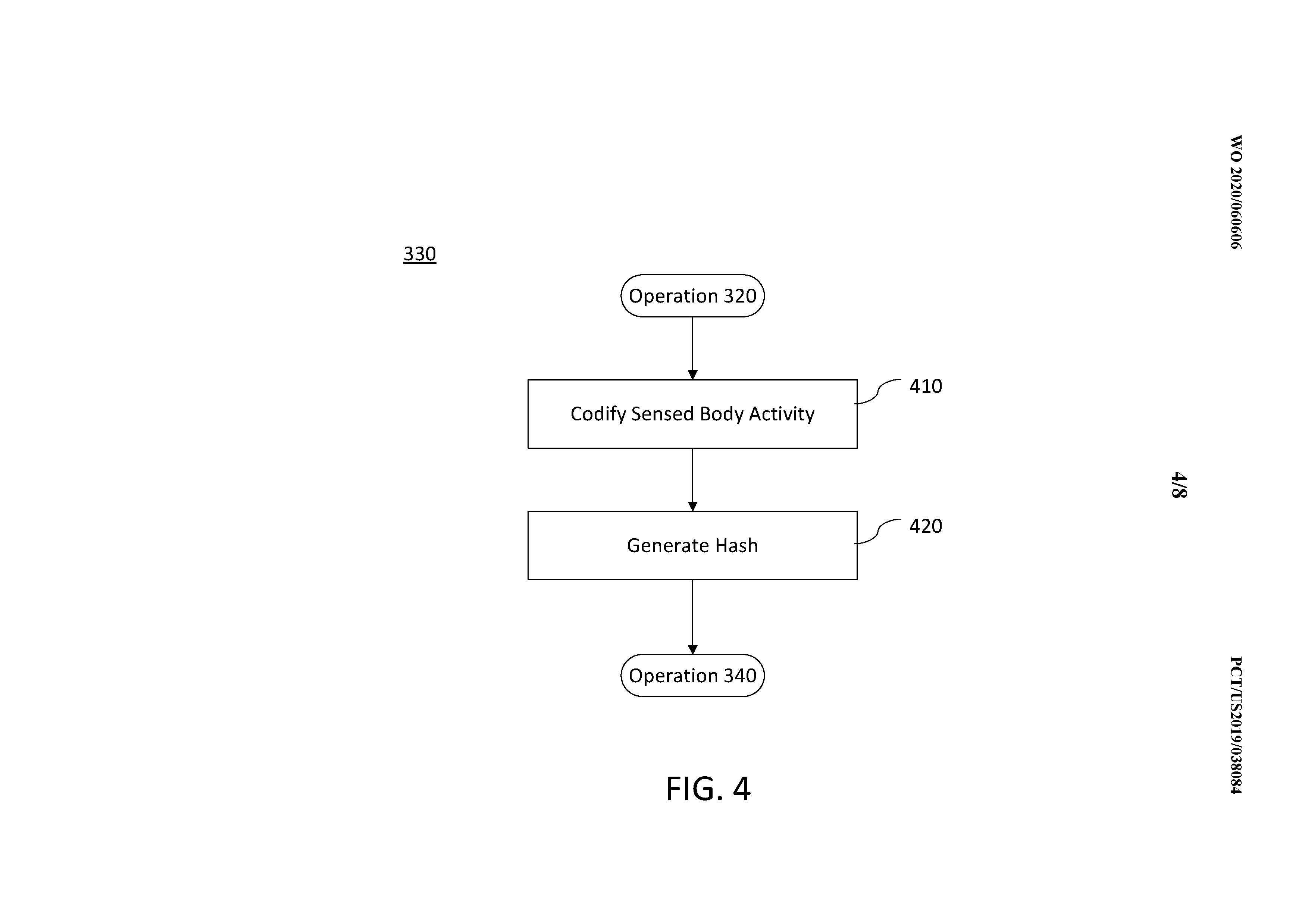
Once the body activity received by the device in operation 320 reaches the device, it will be coded in sequences of numbers, letters, and symbols denominating values and other raw data in operation 410 which will be further encrypted as hash values in operation 420.
In operation 340, the cryptocurrency system will determine if the hash of the body activity is valid according to one or more rules. The rules may consist of whether the hash value matches a specific pattern, a mathematical property, the number of leading numbers, or whether the hash is less than a current target value.
FIG. 5 further explains that the verification operation from 340 implies that the hash sent by the device in operation 330 will be checked if it’s within range, then rehashed, and checked if the rehashed value matches the initial hashed value. Only after that the cryptocurrency is awarded.
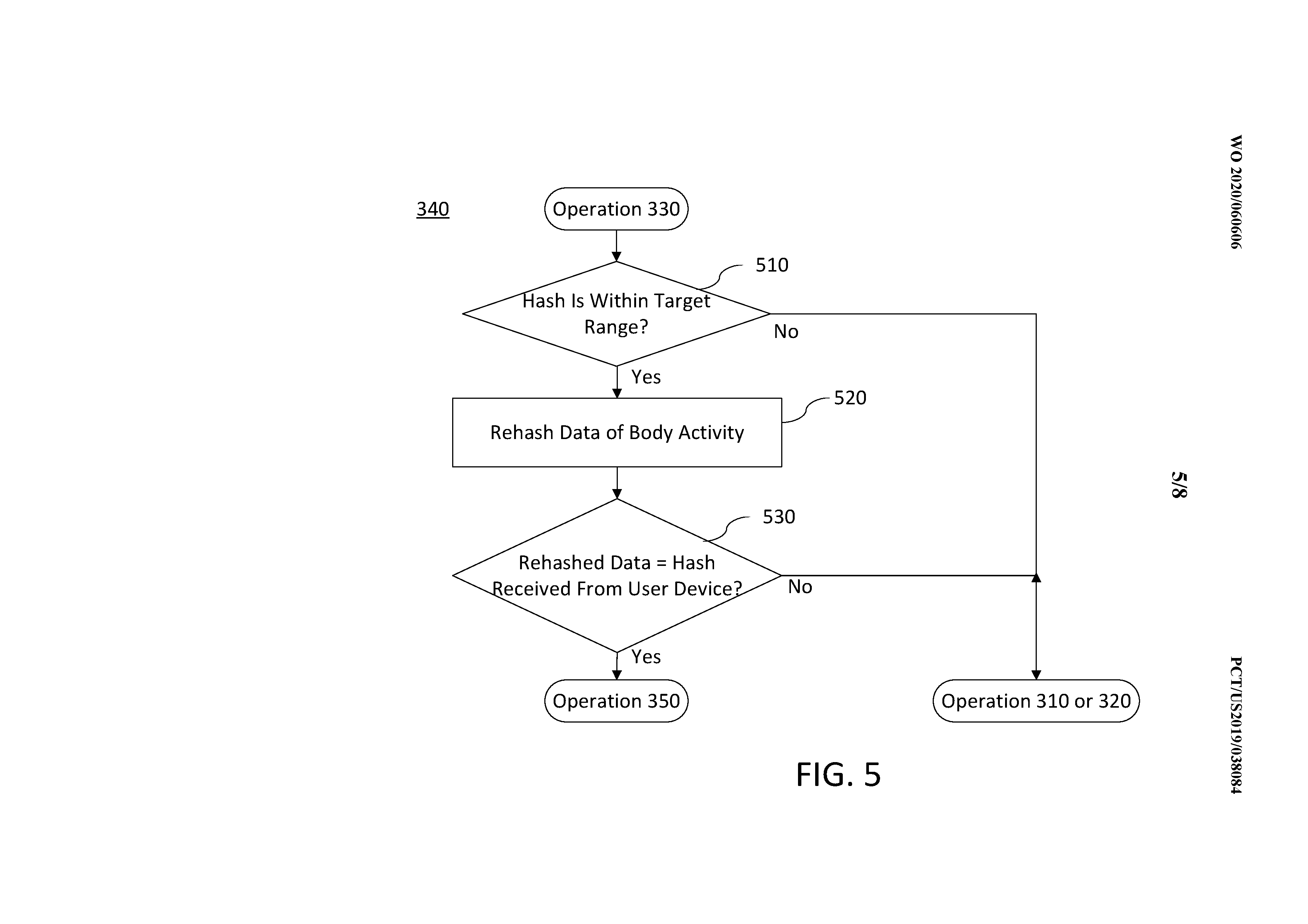
Because nowadays it’s quite easy to obtain data about average human body performance, it will be quite easy for the cryptocurrency system to identify if a hash value is valid or not. If the body data sent by the user device matches the rules established statistically, the data will be rehashed. Once it’s rehashed, the initial body activity data will be compared to the hash value sent by the device.
What happens when the hash value doesn’t fit the rule or the rehashed value does not match the hash sent by the device?
In that case, the user will not be awarded any cryptocurrency and the task will either be sent out again through operation 310 or the device will collect the sensed body activity once more.
However, if the hash is validated and the cryptocurrency is awarded, the hash will be added to a block.
And as shown in FIG. 6, the blocks will be added in a typical form of blockchain. In the sequence, blocks will include the previous hash from all prior blocks to assure immutability along with information regarding tasks and awards.
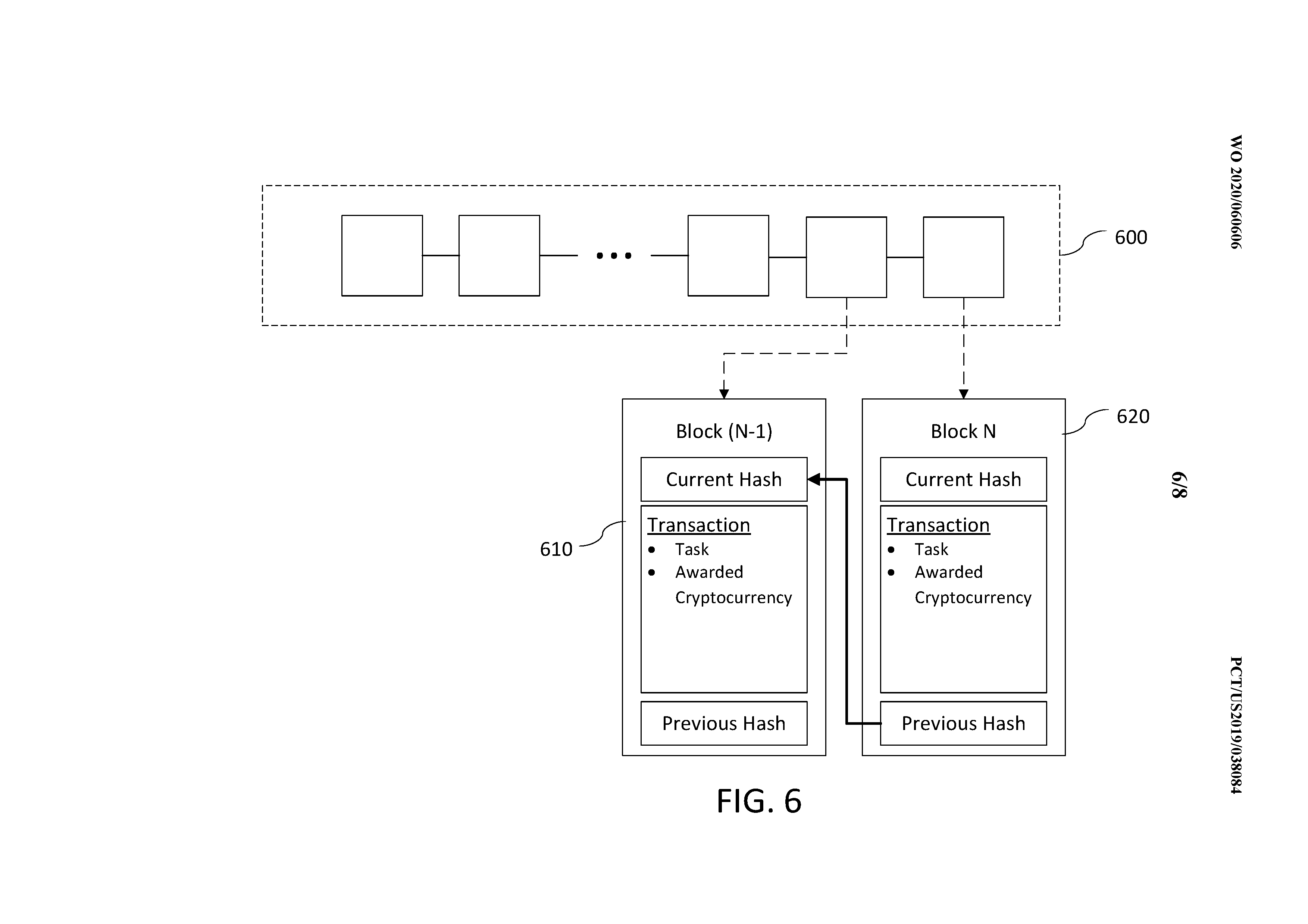
Key Takeaways
- In March 2020, Microsoft US published a patent application that describes a cryptocurrency system using body activity data for mining. The model proposed in the patent was proposed by Dustin Abramson, Derrick Fu, and Joseph Johnson Jr.
- The model described in the patent proposes an approach that replaces the use of vast computational and energetic resources necessary for PoW mining with the use of body activity data to confirm transactions.
- The implementation of this methodology is possible thanks to the existence of available advanced biometric sensors that can track body activity data that range from brain waves to heart rate and many more.
- The model implies that a task provided by a service can be performed by a user that can confirm the completion of the activity through sensors. The data from sensors is processed by the user’s device which encrypts it and sends it to the cryptocurrency system.
- The coded body activity data is sent along with its hash value which is then validated according to pre-established rules that can statistically determine human body performances. The validated data is used for transaction validation inside the blockchain.

